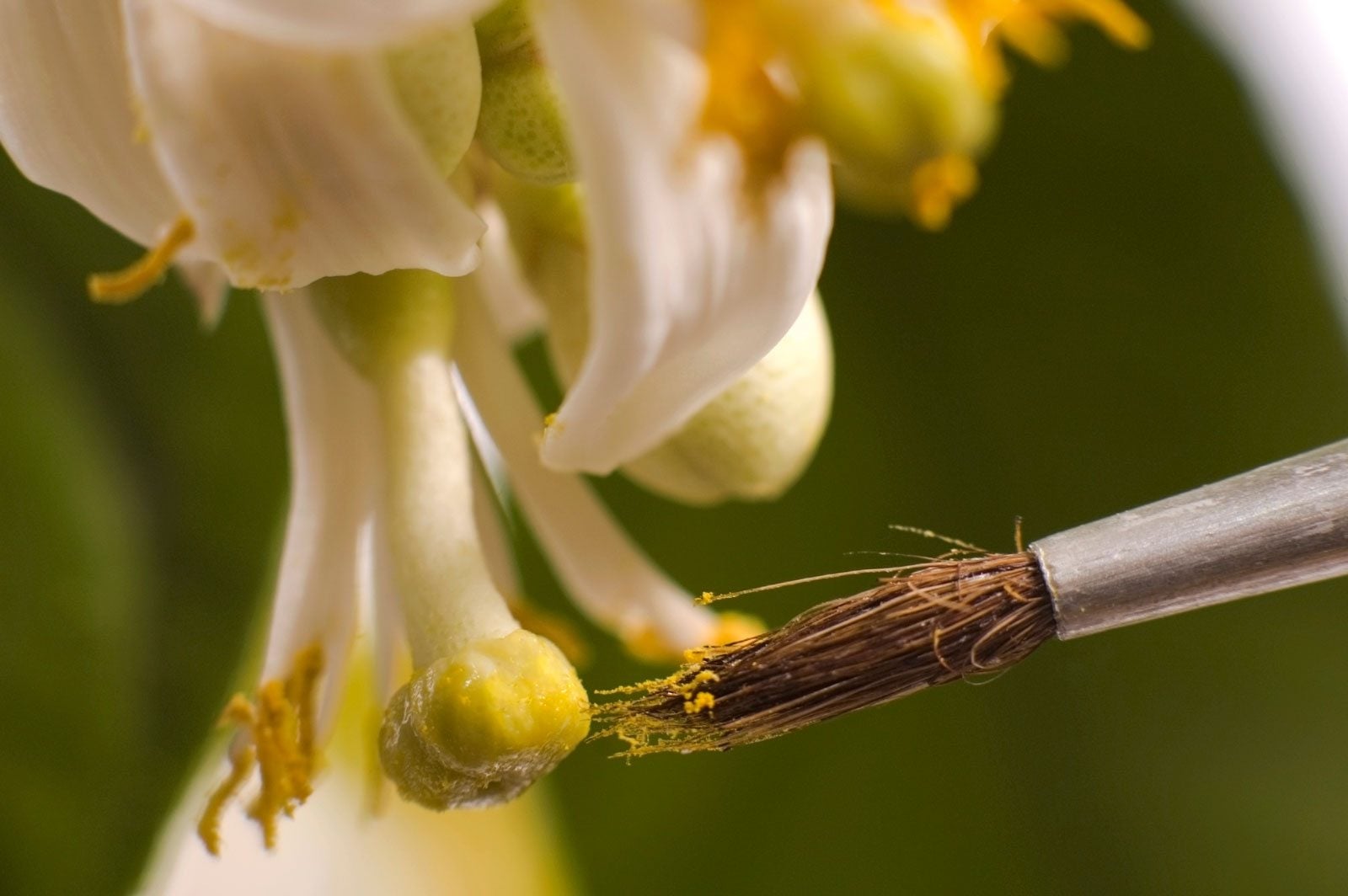Hand Pollinating Lemon Trees: Tips To Help Manually Pollinate Lemons


You never appreciate honeybees quite as much as when you begin growing lemon trees indoors. Outdoors, bees undertake lemon tree pollination without being asked. But since you aren’t likely to welcome swarms of bees in your house or greenhouse, you’ll need to pollinate lemon trees by hand. Read on to learn about indoor lemon tree pollination.
Lemon Tree Pollination
“Lemon tree, very pretty, and the lemon flower is sweet,” goes the traditional song. And it’s true – gardeners are attracted by the lemon tree’s shiny green leaves and the white blossoms that smell like heaven. Still, most folks growing lemon trees are also hoping for a lemon crop and, for indoor trees, this requires that you manually pollinate lemons. In warmer climates, lemon trees grow happily outdoors. Gardeners in cooler regions can grow lemon trees in pots or containers indoors. It helps to select plants that do well in pots like the Ponderosa lemon or the Meyer lemon. In order to produce lemons, a lemon flower’s stigma must receive pollen that contains the flower’s sperm. More specifically, the sperm in the pollen grains must be transferred to the stigma, found at the top of the longer column in the middle of the flower.
Hand Pollinating Lemon Trees
Bees accomplish lemon tree pollination outdoors by buzzing from flower to flower, picking up the yellow pollen as they go and spreading it to other flowers. But when your lemon tree is indoors, you’ll have to plan on hand pollinating lemon trees. The task is not as hard as it sounds. To manually pollinate lemons, you need to have a clear idea of where the flower’s sexual parts lie. Look carefully into a lemon flower. You’ll see one long filament in the center of the flower. This is termed the pistil and contains the female parts of the flower. The stigma is on the top of the pistil. When it is receptive to pollen, the stigma is sticky. The other filaments in the center of the flower are the male parts, collectively termed the stamen. You can see the yellow pollen grains in the sacks, called anthers, at the top of the filaments. To accomplish hand pollination of your lemon tree flowers, you transfer ripe pollen to the sticky stigma. You can manually pollinate lemons in this manner with a small paint brush or a bird feather. It is difficult to determine which flowers have pollen that is ripe. To easily pollinate lemon trees by hand, simply touch each flower with the tip of the paint brush or feather to gather the pollen, then brush each stigma with it in turn.
Sign up for the Gardening Know How newsletter today and receive a free copy of our e-book "How to Grow Delicious Tomatoes".

Teo Spengler is a master gardener and a docent at the San Francisco Botanical Garden, where she hosts public tours. She has studied horticulture and written about nature, trees, plants, and gardening for more than two decades, following a career as an attorney and legal writer. Her extended family includes some 30 houseplants and hundreds of outdoor plants, including 250 trees, which are her main passion. Spengler currently splits her life between San Francisco and the French Basque Country, though she was raised in Alaska, giving her experience of gardening in a range of climates.